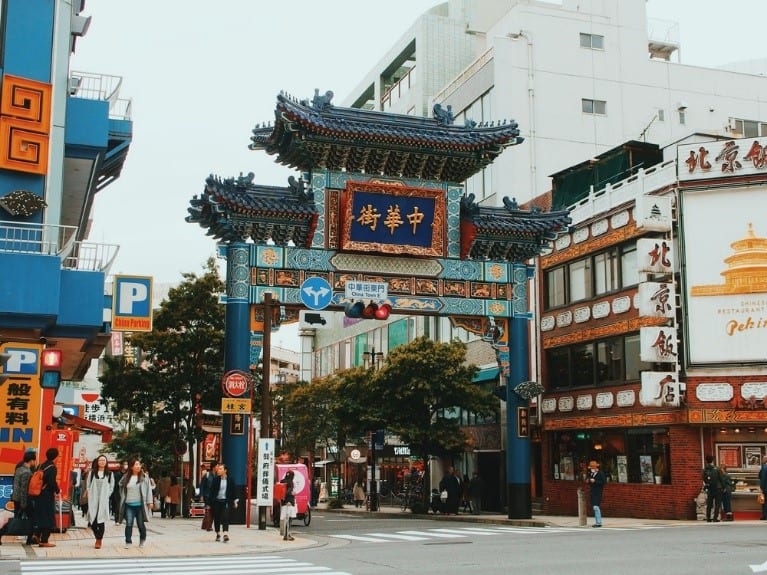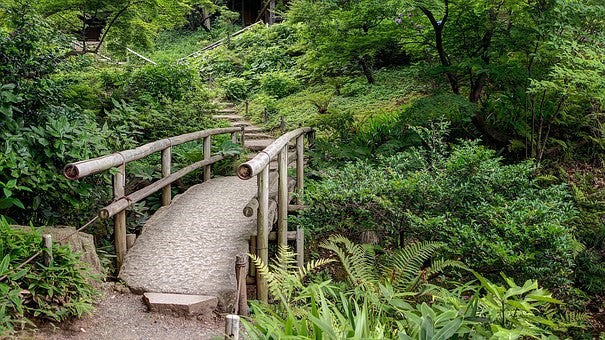The ninth Rugby World Cup will be hosted by Japan this year from 20 September to 2 November with the opening match being held at the National Olympic Stadium in
Toyko and the final match at the Nissan Stadium in Yokohama. If you are visiting Japan this year for the rugby or otherwise, have a read of our Yokohama travel guide. With a population of three million, Yokohama is the second largest city in Japan. Less than half an hour south of Tokyo, it’s easy to visit both cities during your time in Japan. Ahead of your trip, familiarise yourself with Japanese etiquette with these
Japanese etiquette dos and don’ts.
Accommodation
There are so many places to visit in Yokohama that we recommend spending several days in the city. The harbour and waterfront are home to impressive views and hotels in the Kannai district are local to the historic Marine Tower and Osanbashi Pier. The Yamata and Motomachi hillside districts offer shopping and harbour views, and if you’re looking to experience the futuristic edge to Japan, stay in Minato Mirai. This area is Yokohama’s skyline, close to the Landmark Plaza, Queen’s Square and endless dining and shopping choices.

Cuisine
Yokohama is home to Asia’s largest Chinatown, dating back to the 1800s, which holds roughly 250 Chinese shops and restaurants. As one of the largest Chinatowns in the world, Yokohama’s is definitely worth a visit, but if you’re keen to discover Japanese food Yokohama has much to offer.

As well as a vast selection of Japanese restaurants, Yokohama has a Cup Noodles Museum where you can make your own original cup noodles, a fascinating excursion for any instant noodle enthusiast. There is also a Ramen Museum and the Kirin Beer Factory. If the thought of using chopsticks is daunting, swot up with our step by step guide to chopsticks and practise with a pair of
Japanese chopsticks at home. Local delicacies include Japan’s original beef hot pot, gyu-nabe, which can be found at Araiya’s Bankokubashi branch near the waterfront. Other quintessentially Japanese dishes include:
- Sushi - raw fish on rice
- Ramen - noodles in a meat or fish broth
- Unagi - grilled eel
- Soba - buckwheat noodles
- Shabu-shabu - thinly sliced meat and vegetables boiled in water
- Tonkatsu - deep fried pork cutlet
- Yakitori - skewered chicken

It’s normal to be served sake after a meal and it’s considered rude to refuse this digestif, so have a read of our comprehensive sake guide to familiarise yourself with the ritual.

Nature
Japan’s nature is a sight to behold and the Sankeien Garden in southern Yokohama showcases Japanese beauty. Built in 1904, Sankeien exhibits historic buildings from across Japan and features bridges, rivers, bamboo groves, small waterfalls, botanical displays and scrolling trails. The garden is easy to reach via bus and admission is priced at 700 yen.

Yokohama’s Zoorasia is likened to a walking safari due to its open concept and limited fencing. There are eight themed exhibits and you can see the likes of tigers, polar bears, red pandas, lions, elephants, , Japanese monkeys, okapis and more. Zoorasia is accessible by bus or train and is open every day except Tuesdays, with admission costing 800 yen. Get a taste of the ocean at the Yokohama Hakkeijima, Sea Paradise where you can see 120,000 sea creatures from 700 species in Japan’s largest aquarium. Seafood lovers will enjoy the Umi Farm where visitors have the opportunity to catch fish by hand or rod and fry them for a snack. The Sea Paradise also includes a theme park with a selection of rides. Entry costs 4550 yen per adult with activities incurring additional charges.
Art, History and Culture
The Yokohama Museum of Art celebrates its 30
th anniversary this year and is one of the largest art institutions in Japan. The collection includes art by Dali, Magritte, Cezanne, Picasso and local artists. Recent exhibitions have included borrowed pieces from the Tate collection, Monet, and Japanese Copperplate Prints, and future exhibitions promise plenty of variety for art lovers visiting Yokohama. Entry costs just 500 yen, but note that the museum is closed on Thursdays.
Japanese tea ceremonies are a tranquil tradition which can be enjoyed throughout the city. Try tea at a height on the 65
th floor of Yokohama Landmark Tower where you will find Yokohama Royal Park Hotel’s tea room. Modern culture lends itself towards the Pokémon Centre where fans can purchase exclusive merchandise and contend with other customers on instore game consoles.

History buffs will enjoy visiting the maritime museum aboard Hikawa Maru, an ocean liner from the 1920s, whose maiden voyage was from Kobe to Seattle in 1930. And the superstitious types will enjoy visiting Morooka-Kumano Shrine which dates back nearly 1300 years. It is said to hold a charm called Wazawei Tenji Tefukutonasu Omamori which turns any bad luck into good luck instead.
Extra activities
If you’re keen on sport and sightseeing, why not combine the two? You can paddleboard through the city on the river per the latest craze in Yokohama. Classes and tours start at 4,000 yen and start at 9am. A gentler way to start the day is with yoga by the seafront. For a taste of home, pop to Motomachi, a shopping street with a European vibe in the old foreign district of Yokohama. If you are yet to be convinced to travel to Japan for the
Rugby World Cup, let us persuade you with our top 5 reasons to visit Japan in the autumn. If you can’t make the journey this year, why not host a Japanese-themed watch party for your family and friends? Try your hand at
homemade sushi and serve it to your guests at half time on a
sushi set, followed by
sake and
tea.


 As well as a vast selection of Japanese restaurants, Yokohama has a Cup Noodles Museum where you can make your own original cup noodles, a fascinating excursion for any instant noodle enthusiast. There is also a Ramen Museum and the Kirin Beer Factory. If the thought of using chopsticks is daunting, swot up with our step by step guide to chopsticks and practise with a pair of Japanese chopsticks at home. Local delicacies include Japan’s original beef hot pot, gyu-nabe, which can be found at Araiya’s Bankokubashi branch near the waterfront. Other quintessentially Japanese dishes include:
As well as a vast selection of Japanese restaurants, Yokohama has a Cup Noodles Museum where you can make your own original cup noodles, a fascinating excursion for any instant noodle enthusiast. There is also a Ramen Museum and the Kirin Beer Factory. If the thought of using chopsticks is daunting, swot up with our step by step guide to chopsticks and practise with a pair of Japanese chopsticks at home. Local delicacies include Japan’s original beef hot pot, gyu-nabe, which can be found at Araiya’s Bankokubashi branch near the waterfront. Other quintessentially Japanese dishes include:
 It’s normal to be served sake after a meal and it’s considered rude to refuse this digestif, so have a read of our comprehensive sake guide to familiarise yourself with the ritual.
It’s normal to be served sake after a meal and it’s considered rude to refuse this digestif, so have a read of our comprehensive sake guide to familiarise yourself with the ritual. 
 Yokohama’s Zoorasia is likened to a walking safari due to its open concept and limited fencing. There are eight themed exhibits and you can see the likes of tigers, polar bears, red pandas, lions, elephants, , Japanese monkeys, okapis and more. Zoorasia is accessible by bus or train and is open every day except Tuesdays, with admission costing 800 yen. Get a taste of the ocean at the Yokohama Hakkeijima, Sea Paradise where you can see 120,000 sea creatures from 700 species in Japan’s largest aquarium. Seafood lovers will enjoy the Umi Farm where visitors have the opportunity to catch fish by hand or rod and fry them for a snack. The Sea Paradise also includes a theme park with a selection of rides. Entry costs 4550 yen per adult with activities incurring additional charges.
Yokohama’s Zoorasia is likened to a walking safari due to its open concept and limited fencing. There are eight themed exhibits and you can see the likes of tigers, polar bears, red pandas, lions, elephants, , Japanese monkeys, okapis and more. Zoorasia is accessible by bus or train and is open every day except Tuesdays, with admission costing 800 yen. Get a taste of the ocean at the Yokohama Hakkeijima, Sea Paradise where you can see 120,000 sea creatures from 700 species in Japan’s largest aquarium. Seafood lovers will enjoy the Umi Farm where visitors have the opportunity to catch fish by hand or rod and fry them for a snack. The Sea Paradise also includes a theme park with a selection of rides. Entry costs 4550 yen per adult with activities incurring additional charges.
 History buffs will enjoy visiting the maritime museum aboard Hikawa Maru, an ocean liner from the 1920s, whose maiden voyage was from Kobe to Seattle in 1930. And the superstitious types will enjoy visiting Morooka-Kumano Shrine which dates back nearly 1300 years. It is said to hold a charm called Wazawei Tenji Tefukutonasu Omamori which turns any bad luck into good luck instead.
History buffs will enjoy visiting the maritime museum aboard Hikawa Maru, an ocean liner from the 1920s, whose maiden voyage was from Kobe to Seattle in 1930. And the superstitious types will enjoy visiting Morooka-Kumano Shrine which dates back nearly 1300 years. It is said to hold a charm called Wazawei Tenji Tefukutonasu Omamori which turns any bad luck into good luck instead.

